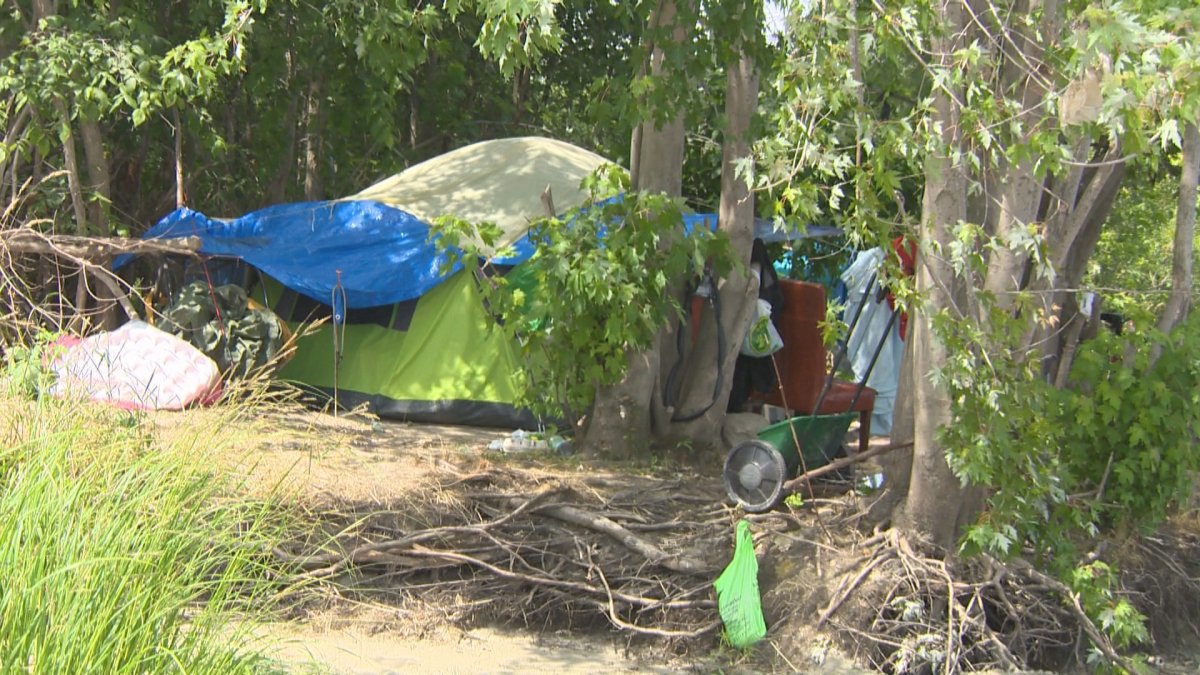OTTAWA – A first-of-its-kind study in Canada is drawing a link between youth homelessness levels and a foster care system that researchers say could be playing a more active role in keeping young people off the streets.

The study released Wednesday found nearly three out of every five homeless youth were part of the child welfare system at some point in their lives, a rate almost 200 times greater than that of the general population.
Of those with a history in the child welfare system, almost two of every five respondents eventually “aged out” of provincial or territorial care, losing access to the sort of support that could have kept them from becoming homeless, the study found.
Canada is creating a group of young people who are at higher risk of becoming homeless because they lack resources when coming out of foster care, said Stephen Gaetz, the study’s co-author and director of the Canadian Observatory on Homelessness.
The report urges the federal government to focus on preventing youth homelessness – particularly among Indigenous youth – and on provinces and territories to focus on “after care” by providing support as needed until age 25.
WATCH: Montreal to track homeless with new database

“We’re not calling out child protection services,” Gaetz said. “We’re not pointing fingers going, ‘It’s horrible what you’re doing.’
“Rather, we’re saying this is an unintended consequence of a whole number of things, but it’s something that we can identify as leading to bad outcomes when young people leave care.”
Prime Minister Justin Trudeau, the Liberal government’s self-proclaimed minister for youth, may want to champion the issue himself to ensure system-wide changes, he added.
The study, based on a survey of 1,103 young people who were homeless in 42 different communities in nine provinces and Nunavut, offers the first national portrait of Canada’s population of homeless youth that will become more detailed in 2018 when dozens of cities focus on youth issues during the next federally organized, point-in-time count of the homeless population.
The questionnaire used during those counts, which are essentially a census of a community’s homeless population during a specific time period, will now include questions about when someone first became homeless and gender identity to better help cities co-ordinate and plan services.
- Life in the forest: How Stanley Park’s longest resident survived a changing landscape
- ‘Love at first sight’: Snow leopard at Toronto Zoo pregnant for 1st time
- Buzz kill? Gen Z less interested in coffee than older Canadians, survey shows
- Carbon rebate labelling in bank deposits fuelling confusion, minister says
Another question has been added to count the number of homeless who are newcomers, either immigrants or refugees. Notes attached to the questionnaire, a copy of which The Canadian Press obtained through the Access to Information Act, say that a large number of homeless immigrants or refugees in a city “may signal an issue that can be addressed upstream” to prevent them from becoming homeless after arriving in Canada.
The data is likely to be richer than what was collected in 2016 during the first federally organized count, as more cities have indicated a willingness to take part.
Aged 13 to 24, homeless youth make up about one-fifth of the homeless population. In raw numbers, that means there are about 6,500 people in that age cohort who are homeless on any given night.
New census data released last week reported some 43,880 youth in foster care in 2016, a decline of about 4,000 from the 47,890 young people Statistics Canada counted in 2011, the first time such data was collected for the census.
The problem is particularly acute for Indigenous youth, who in 2011 made up nearly half of the children in care nationally. Statistics Canada is set to release more census details about Canada’s Aboriginal population later this fall.

The study says that the problems with Indigenous child welfare, which governments have vowed to tackle, highlight the need for structural reforms to help marginalized populations, such as Aboriginals and new immigrants.
“None of these approaches can be a one-size-fits-all approach,” said study co-author David French, director of policy and planning with A Way Home, a national, anti-youth-homelessness coalition.
“So when you speak about Indigenous young people or young people who identify as LGBTQ2S, or new immigrant young people, each of them does require a targeted response underneath a specific strategy.”
LGBTQ2S stands for lesbian, gay, bisexual, transgender, queer and two-spirit, the latter term referring specifically to members of the Indigenous community.
Last week’s census figures also showed one in three Canadians aged 20-34 lived with at least one parent in 2016, an increase of five percentage points between 2001 and 2016.
The numbers were particularly acute in some of the country’s hottest housing markets, with one in two young people living with at least one parent in Toronto last year.
Child protection legislation hasn’t kept pace with these social and economic changes that have made it more difficult for young people to live independently, Gaetz said.



Comments